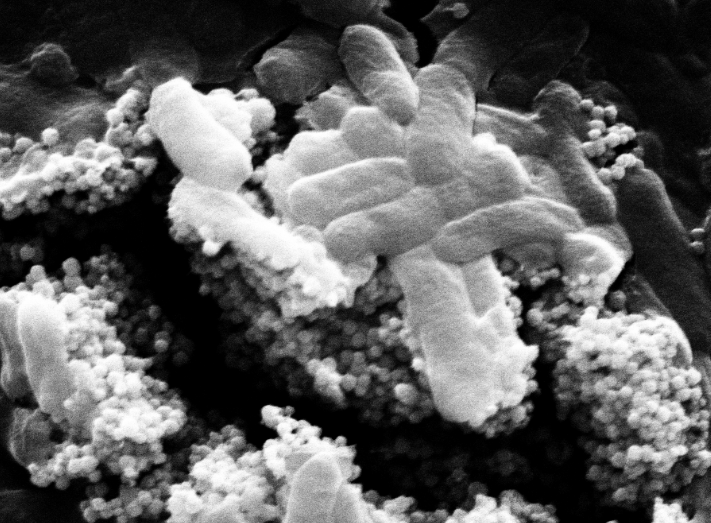Phage-enhanced Nanoparticles to Kill Bacteria
Published on by Water Network Research, Official research team of The Water Network in Academic
Magnetic nanoparticle clusters have the power to punch through biofilms to reach bacteria that can foul water treatment systems.
This is according to scientists at Rice University and the University of Science and Technology of China.

Clusters of nanoparticles with phage viruses attached find and kill Escherichia coli bacteria in a lab test at Rice University. Researchers at Rice and the University of Science and Technology of China have developed a combination of antibacterial phages and magnetic nanoparticle clusters that infect and destroy bacteria that are usually protected by biofilms in water treatment systems. Credit: Alvarez Group/Rice University
The nanoclusters developed through Rice's Nanotechnology-Enabled Water Treatment (NEWT) Engineering Research Center carry bacteriophages—viruses that infect and propagate in bacteria—and deliver them to targets that generally resist chemical disinfection.
Without the pull of a magnetic host, these "phages" disperse in solution, largely fail to penetrate biofilms and allow bacteria to grow in solution and even corrode metal, a costly problem for water distribution systems.
The Rice lab of environmental engineer Pedro Alvarez and colleagues in China developed and tested clusters that immobilize the phages. A weak magnetic field draws them into biofilms to their targets.
The research is detailed in the Royal Society of Chemistry's Environmental Science: Nano.
"This novel approach, which arises from the convergence of nanotechnology and virology, has a great potential to treat difficult-to-eradicate biofilms in an effective manner that does not generate harmful disinfection byproducts," Alvarez said.
Biofilms can be beneficial in some wastewater treatment or industrial fermentation reactors owing to their enhanced reaction rates and resistance to exogenous stresses, said Rice graduate student and co-lead author Pingfeng Yu. "However, biofilms can be very harmful in water distribution and storage systems since they can shelter pathogenic microorganisms that pose significant public health concerns and may also contribute to corrosion and associated economic losses," he said.
The lab used phages that are polyvalent—able to attack more than one type of bacteria—to target lab-grown films that contained strains of Escherichia coli associated with infectious diseases and Pseudomonas aeruginosa, which is prone to antibiotic resistance.
Read full article: Phys.org
Media
Taxonomy
- Treatment
- Treatment Methods
- Filtration
- Nanotechnology
- Filtration
- Nanofiltration